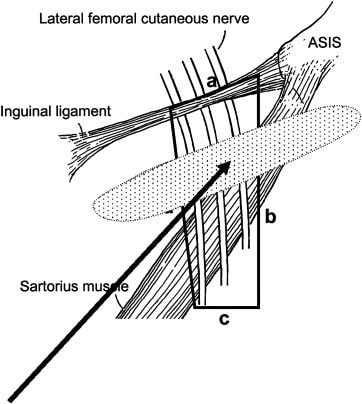Funtabulously Frivolous Friday Five 340
Just when you thought your brain could unwind on a Friday, you realise that it would rather be challenged with some good old fashioned medical trivia FFFF, introducing the Funtabulously Frivolous Friday Five 340
Question 1
You are a paediatrician who has been in practice for many years, and have had the opportunity to examine countless newborn babies.
Can you correctly tell the sex of a newborn baby on from the baby’s facial appearance alone? Do you think you would be as good or better at doing this than the nurses in the normal newborn nursery?
Reveal the funtabulous answer
Paediatricians were only equivalent to a coin toss (correct 50% of the time), Nurses nailed it 59% of the time.
Thirty babies, born at term, were consecutively enrolled on the postnatal ward at Guy’s Hospital in Great Britain. With the permission of families, photographs were taken of babies who were wrapped, with only the face left fully exposed. These photographs were randomly shown to 53 adults, who were asked to provide an opinion as to the baby’s sex. Of the observers, 21 were men, 12 were pediatricians, 14 were pediatric or neonatal nurses, and 27 were not health care workers. Forty of the 53 were also parents.
Nurses came out top with 59%, Paediatricians at 50% and non-medical staff could identify the correct sex 54% of the time.
Needless to say, observers had some fixed ideas about what babies should look like, based on their sex. “Less attractive” and hairy babies tended to be more often assigned the male gender, providing a strong underscoring of the sugar and spice and everything nice bias of the feminine gender.
Reference:
- Round JEC, Dheragoda M. Sex: can you get it right? BMJ 2002;325:1446–7
Question 2
12 young females present to your emergency department all within the space of 2 weeks complaining of tingling and burning on the lateral aspect of their thighs. One girl wonders if this is the start of MS after a google doc consult as it appears to come and go lasting hours at a time.
What is the source of their ailment, is this the latest internet hysteria?
Reveal the funtabulous answer
Meralgia paresthetica
Meralgia paresthetica is a painful mononeuropathy of the lateral femoral cutaneous nerve (LFCN) that manifests clinically as numbness, burning, itching, or pain over the anterior and lateral aspects of the thigh. Also known as the Bernhardt–Roth syndrome
It periodically enters the medical literature depending on the latest fashion trends, hip-huggers were to blame in the 2000s and recently a trend with “taille basse” – low cut jeans or selecting a size too small inflicts pressure on the LFCN.

Diagnosis can be obtained from nerve conduction studies but they are not 100% sensitive.
Using our trusted emergency ultrasound we can anaesthetise the LFCN with your agent of choice +/- methylprednisolone. The accuracy of the injection was confirmed by obtaining anterolateral thigh paresthesia.
The initial treatment of meralgia paresthetica is conservative by correcting mechanical or postural problems (weight loss, looser clothing), the use of local anesthetics and steroids, bed rest, anti-inflammatory drugs, and single or multiple therapeutic nerve blocks.
References:
- Parmar MS. Hiphuggers’ tingly thighs. Can Med Assoc J 2003; 168(1): 16
- Moucharafieh R et al. Meralgia paresthetica: A result of tight new trendy low cut trousers (‘taille basse’). International Journal of Surgery. 2008;6(2):164-168
- Tomaszewski KA, Popieluszko P, Henry BM, Roy J, Sanna B, Kijek MR, Walocha JA. The surgical anatomy of the lateral femoral cutaneous nerve in the inguinal region: a meta-analysis. Hernia. 2016 Oct;20(5):649-57.
Question 3
What is the “colonic index” and what does this have to do with the GI tract or with journals?
Reveal the funtabulous answer
The “colonic index” relates to the fact that journals actually keep records of the titles of their medical papers with respect to whether or not a colon appears in the title.
It seems that there is a distaste for the use of the colon in a journal article title on the part of journal editors, but over time, the use of the colon has changed. A study reported in the British Medical Journal (Cameron H, 1997) has shown that the use of the colon has dramatically increased in the Lancet and the British Medical Journal (by a factor of six-fold in the years 1970 through 1995).
During the same period, the editors of the New England Journal of Medicine had been fairly meticulous in weeding out this punctuation mark, save for the one colon that appeared in the New England Journal of Medicine in 1985, a colon let in by Dr. Arnold Relman, Editor at the time.
The use of the colon in British journals perhaps represents further evidence of an obsession with matters intestinal, a variant of inflammatory vowel disease.
Reference:
- Cameron H, Robertson A. The colon in medicine: nothing to do with the intestinal tract. BMJ. 1997 Dec 20-27;315(7123):1657-8.
Question 4
If you are down on your luck, how safe is fire-eating as an occupation?
Reveal the funtabulous answer
Not very…
All of us have seen pictures of fire-eaters and have marvelled at the ability to perform such stunts. One is also impressed that there seem to be no acute respiratory injuries associated with this occupation, a common observation that is absolutely correct, medically.
A study, however, reported in Archives of Medical Research shows that not all is well with those who like to eat fire. Of 30 fire-eaters, all men 19 to 42 years of age, two-thirds had respiratory studies showing serious chronic obstructive pulmonary abnormalities.
These abnormalities were associated with airflow decrement consistent with emphysema, the degree of which appeared to relate to the number of years spent in the activity of fire-eating.
Those who play with fire are going to get burned, one way or another.
Reference:
- Cabrera A, Vargas MH, Ochoa LG, Escobedo G, Ashley-Sosa G, Rico-Méndez FG. Spirometric changes in fire-eating subjects in Mexico City. Arch Med Res. 2003 Jul-Aug;34(4):276-80
Question 5
The weather is changing where you are, maybe it’s getting cold and you decide to head off for some sunshine. Maybe you are fortunate enough to live in a tropical paradise. Or maybe you are just stubborn and you are going to go out on that jet ski regardless of the chunks of ice in the lake. After blasting around and slapping the water at 50kph+ you hobble home with some lower back pain.
What injury have you sustained?
Reveal the funtabulous answer
L1 compression fracture.
A series of cases from the island of Malta reports that these fractures are invariably located around the thoracolumbar junction and that L1 is the vertebra most commonly affected. As predicted this anomaly only occurs in the summer season.
The take-home message is to x-ray those patients who have been doing recreational water sports and present with back pain. The incidence is seasonal and all fractures occurred between May and October. The message is that anyone complaining of back pain after indulging in this sort of recreational activity needs to have their spine x-rayed.
Reference
- Maempel JF, Maempel FZ. The speedboat vertebral fracture: a hazard of holiday watersports. Scott Med J. 2019 May;64(2):42-48.
…and Finally
If you have not yet checked out the latest Sixth Sense educational series on LITFL, they are both very worthy of your time
- Comms Lab: The path to highly effective communication skills with Hayden Richards
- Mindfulness and the Emergency Healthcare Professional with Andrew Dean

FFFF
Funtabulously Frivolous Friday Five
Dr Neil Long BMBS FACEM FRCEM FRCPC. Emergency Physician at Kelowna hospital, British Columbia. Loves the misery of alpine climbing and working in austere environments (namely tertiary trauma centres). Supporter of FOAMed, lifelong education and trying to find that elusive peak performance.



